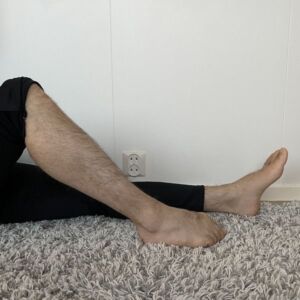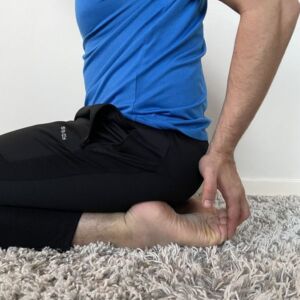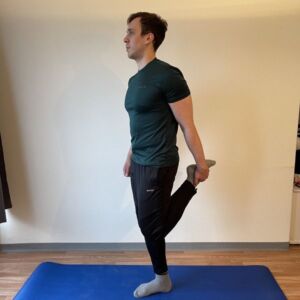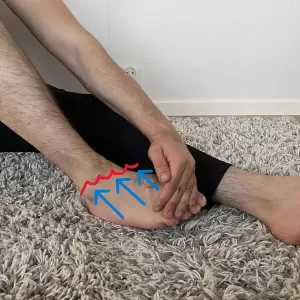Tibialis Anterior Stretch: 5 Best Stretches For Flexibility
The tibialis anterior muscle is located in the front of your lower leg and is important for movements of the foot and ankle. It helps to lift your foot and toes, and also aids in turning your foot inward (inversion).
This muscle is especially important for maintaining the medial arch (the arch on the inside of your foot) and maintaining balance in your legs when walking. It plays a particularly important role in the first phase of walking, known as the initiation phase.
Let me show you the best way to stretch tibialis anterior.
Stretches For Tibialis Anterior
1.Dynamic Tibialis Anterior Stretch
Sit on the floor and bend your knee at ninety degrees roughly. Push down with your foot ten times. Don’t perform this exercise too fast.
2.Passive Tibialis Anterior Stretch (Kneel Stretch)
Start by kneeling on your knees. Gently lean forward with your body and you will increase the stretch of tibialis anterior. Hold for 30s. *Bend your toes with your fingers to increase the stretching of tibialis anterior.
3. Standing Quadriceps And Tibialis Anterior Stretch
- Stand up straight with your feet shoulder-width apart.
- Reach down and grab your foot with your hand.
- Pull your foot backward and try to bend your knee as much as you can.
- Hold this position for 30 seconds.
3. PNF Contract-Relax Technique for Tibialis Anterior
- Sit on the floor with your feet in a neutral position.
- Use your hands to grab your foot and gently push it downward, feeling a stretch in your tibialis anterior muscle.
- Hold this stretch for 10 seconds.
- Try to lift your foot and toes off the ground while you resist with your hands. This will contract the tibialis anterior muscle.
- Hold this contraction for 6 seconds.
- Release and repeat the stretch and contraction five times.
Why You Should Care About Tibialis Anterior?
Exercising tibialis anterior muscle can help with easing the pain from shin splints and relieving tension in extensor hallucis longus and extensor digitorum longus muscles. Why?
Because all of these three muscles do a similar movement, lifting the foot and toes up. Sometimes tibialis anterior become underactive and those two muscles get overactive which can lead to pain and reduced range of motion in your toes and ankle.
Another reason for caring about tibialis anterior muscle is the balance in your foot when walking.
When tibialis anterior doesn’t do its work, the foot placement when walking is not optimal, especially when you’re placing your heel on the ground.
That can, over time, lead to the overactivation of hip flexors and discomfort in front of hip.
Tips When Doing Stretches For Tibialis Anterior
- Don’t bounce into stretch.
- Breath deeply when performing stretching exercises
- Stop if you experience pain in your ankle or foot
- Don’t hold stretches for more than 30s.
- Don’t neglect one leg.
- Don’t stretch too hard because that can lead to muscle strain and/or muscle rupture.




